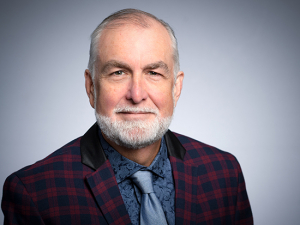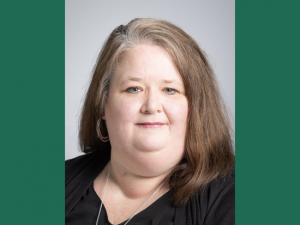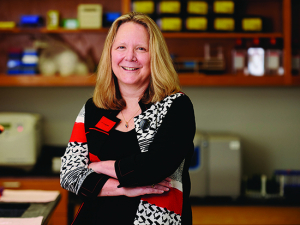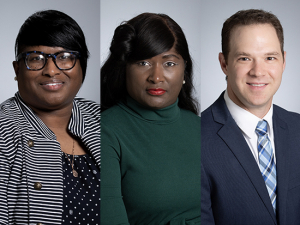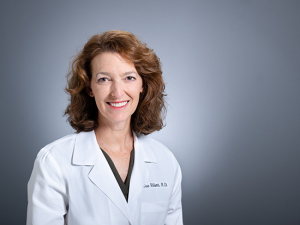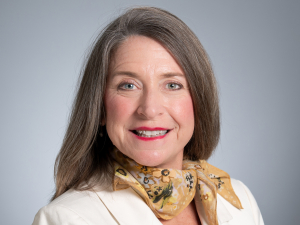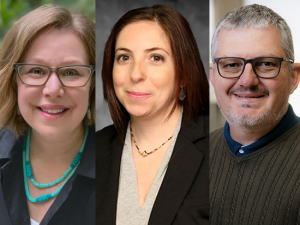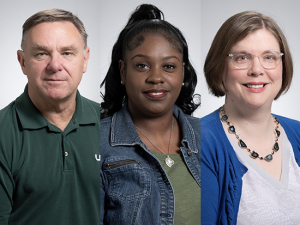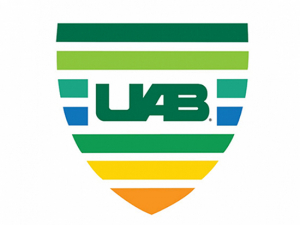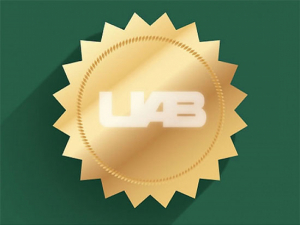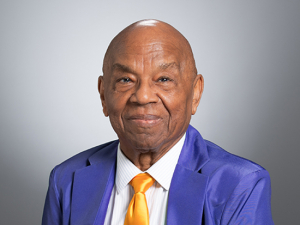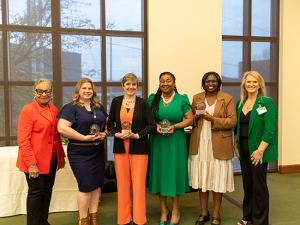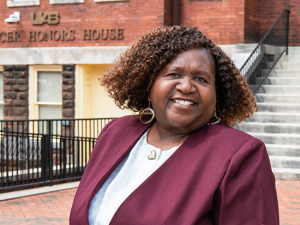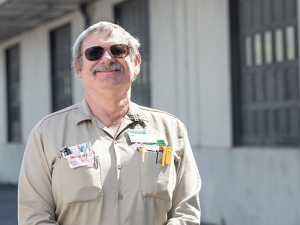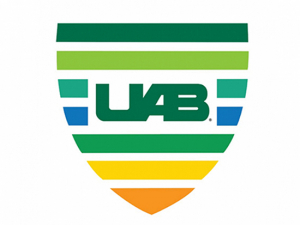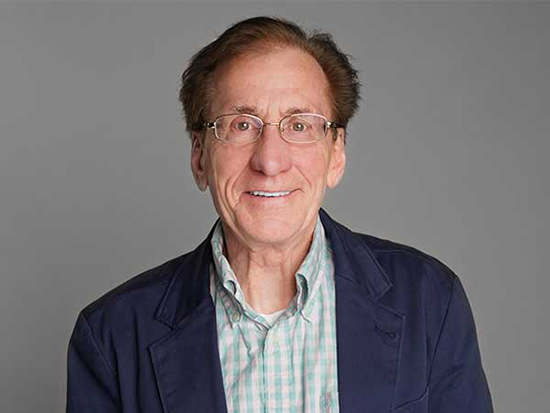 James Rimmer, Ph.D., professor and inaugural Lakeshore Foundation Endowed Chair in Health Promotion and Rehabilitation Sciences in the School of Health Professions, has earned the 2024 Sam Brown Bridge Builder Award, which recognizes a UAB faculty member who engages in interdisciplinary, collaborative efforts across campus.When he was a boy growing up in public housing in New York City, James Rimmer, Ph.D., spent most of his time outside. “When I was a young kid, everything in my universe was outdoor sports — stickball, handball, stoop ball, whatever you could do to keep yourself busy,” he said.
James Rimmer, Ph.D., professor and inaugural Lakeshore Foundation Endowed Chair in Health Promotion and Rehabilitation Sciences in the School of Health Professions, has earned the 2024 Sam Brown Bridge Builder Award, which recognizes a UAB faculty member who engages in interdisciplinary, collaborative efforts across campus.When he was a boy growing up in public housing in New York City, James Rimmer, Ph.D., spent most of his time outside. “When I was a young kid, everything in my universe was outdoor sports — stickball, handball, stoop ball, whatever you could do to keep yourself busy,” he said.
No matter the sport, the ritual was always the same. “We would choose up sides, and how that worked was people would pick the best athletes and on down until you got everybody,” recalled Rimmer, professor, director of the UAB Research Collaborative, and Lakeshore Foundation Endowed Chair in Health Promotion and Rehabilitation Sciences in the School of Health Professions. “But it wasn’t really everybody. Children who were awkward or disabled were never chosen.” Even as a youngster, Rimmer knew this was not fair, he said: “I thought, ‘Everyone should have a chance.’”
Most of the other kids went home around 5 p.m. when their parents called them for supper. But Rimmer’s parents worked late, so he was still outside when the children with disabilities ventured out — after everyone else had gone in. “So I would teach them how to use a baseball glove, how to hold a stickball bat,” Rimmer said. “I found that to be very rewarding.”
From stickball to international leader
By the next decade, the 1970s, and largely through the demands of parents, “laws came out that allowed children to be in the public school system instead of special schools,” Rimmer said. “It used to be that you had no access to jobs, to public transportation and independent living. If your parents died, you ended up in an institution.”
"From my first time meeting with him, he began championing for me as a disability researcher and as a person with a disability."
In 1977, Rimmer earned his bachelor’s degree in health and physical education, then went on to earn a doctorate in kinesiology, with a specialization in adapted physical activity. By the mid-1980s, he was project director on a grant to Manhattan College to develop an after-school and weekend rehabilitation program for youth with disabilities, where he was an assistant professor. That was just the first of many grants for Rimmer. In his first decade at UAB, from 2012-2022, Rimmer’s grant funding total as PI was more than $85 million, with a career total exceeding $115 million.
Accessibility research, what is now called inclusion science, is Rimmer’s specialty, and he is an international leader in the field. “Inclusion goes beyond accessibility,” Rimmer said. “It’s not just building a bridge, but what you do on the other side of the bridge. Everything we do in science has to be inclusive.”
 Rimmer's Adaptive Human Performance Lab offers innovative and extensive services for exercise, nutrition, physical activity, and health assessments and interventions for research related to improving physical and psychological well-being of people with disabilities.Rimmer is the first researcher with a focus on the health and fitness of people with disability to be appointed to the Scientific Board of the President’s Council on Fitness, Sports, and Nutrition, which helps to advise the U.S. Secretary of Health and Human Services.
Rimmer's Adaptive Human Performance Lab offers innovative and extensive services for exercise, nutrition, physical activity, and health assessments and interventions for research related to improving physical and psychological well-being of people with disabilities.Rimmer is the first researcher with a focus on the health and fitness of people with disability to be appointed to the Scientific Board of the President’s Council on Fitness, Sports, and Nutrition, which helps to advise the U.S. Secretary of Health and Human Services.
Rimmer is the founder and director of the National Center on Health, Physical Activity and Disability, or NCHPAD, which was established in 1999 through the Centers for Disease Control and Prevention, to promote inclusive physical and social activities for people with disabilities. NCHPAD is a national hub for implementation science and practice, with more than 1.5 million individuals annually engaged in its free online health and wellness content at nchpad.org and more than 2,100 live health classes and sessions conducted.
Soon after he began NCHPAD, Rimmer received a federal grant from the National Institute on Disability, Independent Living and Rehabilitation Research, to establish a Rehabilitation Engineering Research Center on Recreational Technologies, known as RecTech, for People with Disabilities. The focus of the center is on adapting technologies that can make physical activity more inclusive, such as internet-equipped systems to connect fitness trainers with individuals with disabilities in underserved communities.
Rimmer “excels in fostering collaborative partnerships that have both local and global impacts, uniting people, departments, centers and organizations in innovative ways,” nominators wrote.
In 2019, Rimmer became director of CEDHARS, the Center for Engagement in Disability Health and Rehabilitation Sciences, one of 25 university-wide interdisciplinary research centers at UAB, which is composed of some 125 faculty affiliates from eight different UAB schools. CEDHARS engages in cutting-edge inclusion science research and training.
The base of operations for all of these activities is the WHARF, the Wellness, Health And Research Facility, on the grounds of the Lakeshore Foundation campus in Homewood. A research lab is packed with high-tech research equipment; a video studio produces training materials; in a call center, student assistants answer phones and emails from people with disabilities across the United States who would like to enroll in various online health promotion programs, or who have a question that can be referred to a set of expert inclusion specialists.
Sam Brown Bridge Builder Award
In recognition of his collaborative work across campus, Rimmer has earned the 2024 Sam Brown Bridge Builder Award, which recognizes a UAB faculty member who engages in interdisciplinary, collaborative efforts across campus in ways that embody the vision, character and bridge-building talents vital to the university’s future. Rimmer will be recognized during the annual Faculty Convocation, to be held later this fall.
“Dr. Rimmer successfully integrates diverse disciplines across the university involving researchers from the School of Health Professions, Heersink School of Medicine, School of Engineering, School of Education, College of Arts and Sciences, School of Public Health, and School of Nursing, demonstrating a truly comprehensive interdisciplinary approach,” nominators wrote.
"When you have a 40-year career, you have to consistently ask yourself the question, ‘Am I doing this for me or to help other people?’ If it is to help other people, it is easy to create partnerships. You realize you will need the expertise of a large group."
After Professor James O. Hill, Ph.D., joined the UAB faculty in 2018, Rimmer “reached out to discuss how we could integrate my interests in weight management with his interests in improving the lives of those with disabilities,” Hill wrote in a nomination letter. “This resulted in development of a weight-management program specifically for people with disabilities. The program was highly successful, producing much more weight loss than any previous program for this population. Our collaboration supported a Ph.D. student, Julianne Clina, who led the development of the program for her dissertation. She was first author on the resulting publication. Dr. Clina is now a postdoctoral fellow at the University of Kansas Medical Center and continuing to improve weight-management programs for persons with disabilities.”
“Am I doing this for me or to help other people?”
Similar stories can be found throughout the nomination letters: Rimmer’s personal outreach and enthusiasm encourage other researchers to get involved in disability work that helps change lives and build careers. Byron Lai, Ph.D., now an assistant professor in the Division of Pediatric Rehabilitation Medicine in the Department of Pediatrics, has worked with Rimmer for a decade. Lai was studying for his master’s degree at Cal State Northridge when he received a prestigious scholarship. “The scholarship allowed me to choose any research faculty in the world to conduct research under in a summer internship,” Lai wrote in a nominating letter. He chose to come to Rimmer’s lab at UAB, and went on to get his Ph.D. and two postdoctoral degrees here under Rimmer’s guidance. “Dr. Rimmer and I have helped hundreds of adults with disabilities through research, and since my appointment as faculty, now more than 300 children and youth with disabilities,” Lai wrote. He has also received two NIH-funded grants, helping Lai establish himself as an independent investigator.
"Remarkable contributions"
Hear more from colleagues about Rimmer and the Sam Brown Bridge Builder Award in this article from the School of Health Professions.
Rimmer “excels in fostering collaborative partnerships that have both local and global impacts, uniting people, departments, centers and organizations in innovative ways,” another group of nominators wrote.
“From my first time meeting with him, he began championing for me as a disability researcher and as a person with a disability,” wrote Jereme Wilroy, Ph.D., associate professor in the Department of Physical Medicine and Rehabilitation. “Dr. Rimmer helped me to see the gaps in the field that I can fill and connected me with over a dozen mentors, whether local, national and even international leaders in our field.”
How does Rimmer bring people together? “When you have a 40-year career, you have to consistently ask yourself the question, ‘Am I doing this for me or to help other people?’” Rimmer said. “If it is to help other people, it is easy to create partnerships. You realize you will need the expertise of a large group of people — researchers from a variety of fields, but also people who have lived experiences and make them part of the team.”
Ambitious proposals to tackle visionary problems
Rimmer and colleagues recently submitted an ambitious proposal to the NIH for a major P50 grant to fund a disability health promotion research center at UAB. “It is bringing together a collective group of people — Family Medicine, the School of Health Professions, School of Public Health and more — to figure out how to get all of this new health promotion technology to be more inclusive,” Rimmer said. Tech such as activity trackers and nutrition apps can be adapted to be helpful for people with disabilities as well, Rimmer explained: “An NIH-funded center would allow us to bring the people together to work on these visionary problems and find answers. These are problems that require experts in health promotion, wearables, data science, AI and so on.”
These are not just problems for researchers, either, Rimmer emphasizes. “The community of people with disabilities have been marginalized,” he said. “It’s not just a matter of serving on an advisory board. We have included funding as part of the grant application to make people with disabilities part of each of the cores of the center.”
Looking forward, Rimmer is excited about the possibilities of AI. “Disability is not this enigma,” he said. “You just have to understand there are certain conditions that affect people with disabilities and make the appropriate adaptations. There are layers of different components associated with disability, but those are all part of a system.” A person with disability may live 10 miles away from a fitness center, experience shoulder pain from pushing a wheelchair and so on — all factors that contribute to difficulty in getting exercise that would in turn improve their physical and mental health. “You can imagine putting all these factors in and having the AI say, ‘This is the most likely pathway to help this person be able to exercise,’” Rimmer said. “That is where we are going.”

